You want clear skin without gambling on gimmicks. Devices can speed up acne results, but the wrong gadget can inflame your face, waste money, and set you back weeks. Here’s the grounded, research-backed guide to what works, what doesn’t, and how to use tools safely alongside your routine. Expect steady wins, not miracles-most legit tools need 6-12 weeks to show real change.
- TL;DR: Light therapy (blue/red LED) and hydrocolloid patches have the best evidence. Tools that extract (comedone loops, ultrasonic scrubbers) help blackheads if used gently. Pore vacuums and at-home microdermabrasion are risky for active acne.
- Budget rule: Spend first on proven topicals (benzoyl peroxide/retinoids), then add one device that matches your acne type.
- Timeline: Expect visible improvements in 2-4 weeks for patches/spot tools, 6-12 weeks for LEDs.
- Safety first: If you’re on isotretinoin or photosensitizing meds (like doxycycline), talk to your derm before using light or exfoliating tools.
- Pro move: Clean devices with 70% isopropyl alcohol after every use. Don’t share tools. Stop if you see burning, blistering, or bruising.
How to Pick Tools That Actually Work (and Fit Your Acne)
Start with your acne type. Different tools target different problems:
- Whiteheads/blackheads: Gentle extraction tools, ultrasonic skin scrubbers, and consistent retinoid use.
- Red, inflamed pimples: Blue/red LED therapy and hydrocolloid patches; benzoyl peroxide helps too.
- Cystic or nodular acne: Devices won’t replace prescription care. See a dermatologist; consider in-office treatments.
What the science says, in plain English:
- LED therapy (blue 415 nm, red ~630-660 nm): Multiple randomized trials and systematic reviews report modest but real reductions in inflammatory lesions (often 30-50% at 8-12 weeks) with regular sessions. The American Academy of Dermatology (AAD, 2023-2024 guidance) lists light therapy as an adjunct, not a replacement for core meds. Several masks are FDA-cleared for mild-to-moderate acne.
- Hydrocolloid patches: They reduce swelling, protect from picking, and speed up healing in 24-48 hours. A small randomized study (2015) showed faster improvement vs. no patch; newer split-face trials back the same idea. Add salicylic or BHA patches if you tolerate acids.
- Comedone extractors: Old-school steel loops can work for blackheads and mature whiteheads-if you’re gentle and your skin is prepped. Dermatologists use them routinely; the risk is pressure-related skin trauma if you push too hard.
- Ultrasonic “skin scrubbers”: These spatulas vibrate to nudge out debris; evidence is limited but anecdotal results are decent for blackheads when used on damp skin. They’re less likely to bruise than vacuums.
- High-frequency wands: Ozone-producing tips may reduce bacteria and redness, but high-quality trials are scarce. Consider this a nice-to-have spot soother, not a core treatment.
What to skip or use with caution:
- Pore vacuums: Easy to bruise or burst capillaries and worsen post-inflammatory hyperpigmentation, especially on darker or sensitive skin.
- At-home microdermabrasion and dermaplaning: Can spread bacteria and inflame active acne. Better for texture and dullness when acne is quiet.
- Microneedling on active acne: Not recommended by the AAD for active breakouts; risk of infection and scarring.
- IPL/laser at home: For acne, the at-home evidence is weak; pro devices are better handled in-office.
Decision filter that saves money:
- Buy proven topicals first (retinoid + benzoyl peroxide or azelaic acid). If you’re already on these and still want a boost, move to step 2.
- Pick one tool that matches your main problem (LED for inflamed pimples, extractor/scrubber for blackheads, patches for big red pop-ups).
- Set a clear trial window: 8-12 weeks for LED; 3-4 weeks for extraction/scrubber routines; 2-3 breakouts for patches.
- Keep photos weekly in the same lighting. If you don’t see a trend by the end of the window, stop.
Best Devices for Clear Skin in 2025 (What to Buy, What to Skip)
Here’s the straight list-best use case, who it helps, and who should avoid it.
- Best overall for inflamed acne: LED mask or panel (blue + red)
- Why: Blue light targets Cutibacterium acnes; red light calms inflammation and supports healing. This combo has the most human data among at-home choices.
- Use: 10-20 minutes per session, 3-5 times a week, for 8-12 weeks; then 1-3 times weekly for maintenance.
- Price: $100-$500 for reputable, FDA-cleared devices.
- Watch-outs: Eye protection matters. A consumer mask recall in 2019 raised concerns for users with eye issues-pick devices with built-in eye shields and follow the manual.
- Best for whiteheads/blackheads: Comedone extractor (single-loop) + steaming or warm compress
- Why: It’s precise and cheap. When used on fully softened, clean skin, it removes plugs without tearing.
- Use: Once a week max. Disinfect tool before/after. Roll, don’t press straight down. Stop if it doesn’t release with light pressure.
- Price: $8-$25 for stainless steel; avoid multi-piece kits if you’re new.
- Skip if: You scar easily, have active cysts, or you’re on isotretinoin.
- Best gentle tech for congestion: Ultrasonic skin scrubber
- Why: Less trauma than suction devices; good for sebaceous filaments and blackheads on nose/cheeks.
- Use: On damp skin, 2-3 minutes per area, 1-2 times a week. Follow with a hydrating serum.
- Price: $25-$80.
- Limitations: Evidence isn’t as strong as LED; think maintenance, not cure.
- Best for active, angry zits: Hydrocolloid patches (with or without salicylic acid)
- Why: They flatten pimples faster by absorbing fluid and blocking picking, which lowers scarring risk.
- Use: 6-24 hours on clean, dry skin. Replace when swollen/opaque.
- Price: $7-$20 per 24-60 patches.
- Pro tip: Use plain hydrocolloid on popped or drained pimples; use salicylic versions on intact inflamed spots.
- Nice-to-have spot calmer: High-frequency wand
- Why: Anecdotally reduces redness the morning after. Evidence is limited; use as a helper.
- Use: Short, gliding passes for 30-60 seconds per spot, 2-3 times a week max.
- Price: $40-$120.
- Avoid if: You have a pacemaker, are pregnant, or have metal implants near the face (check manufacturer guidance).
- Proceed with caution: Pore vacuum extractors
- Why: They can remove sebum but often bruise and worsen hyperpigmentation.
- If you insist: Lowest suction, keep moving, limit to 1-2 passes, once every 2 weeks.
- Skip for active acne: At-home microdermabrasion and dermaplaning
- Why: Can spread bacteria and inflame lesions. Better once acne is controlled.
- Skip for active acne: Microneedling
- Why: The AAD advises against needling through active breakouts due to infection and scarring risk.
Good non-device alternatives worth every dollar:
- Topicals with evidence: Adapalene or tretinoin (retinoids), benzoyl peroxide, azelaic acid. These are first-line per AAD guidelines.
- In-office when you need speed or have scarring/cysts: Chemical peels (salicylic), professional extractions, blue/red light or photodynamic therapy, corticosteroid injections for cysts, and for severe cases, isotretinoin under medical care.
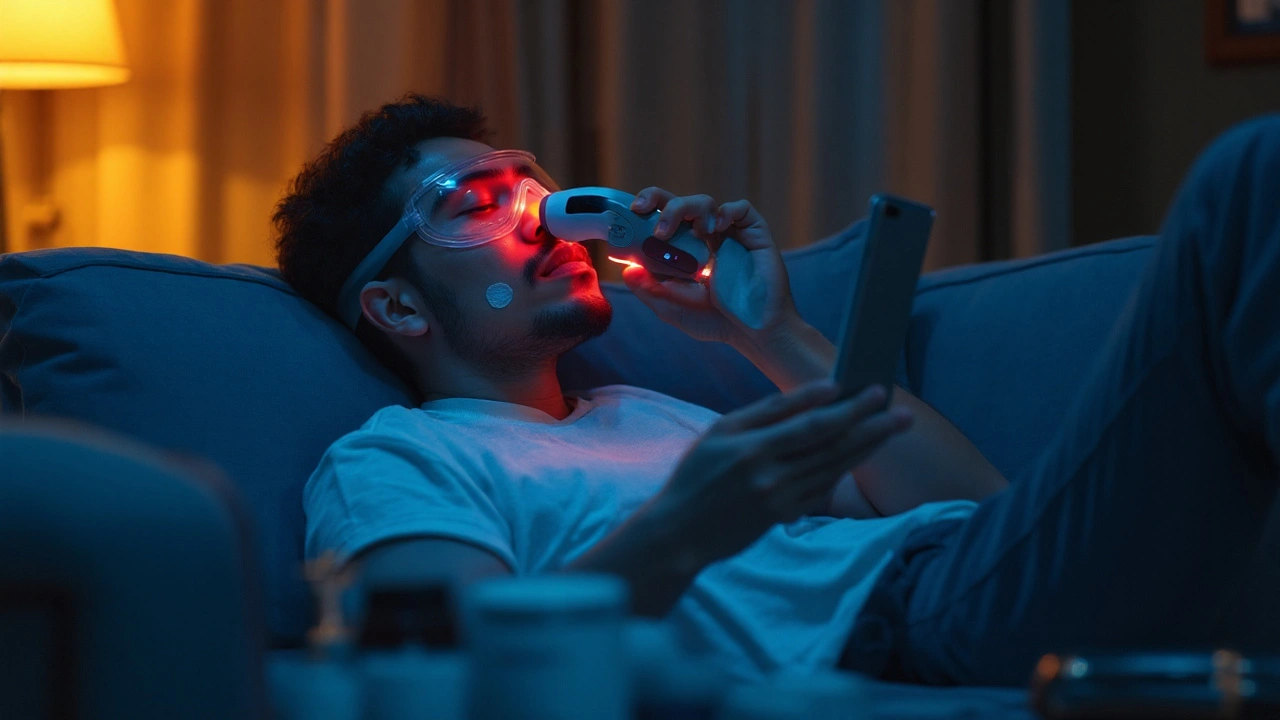
Compare Costs, Results, and Risks
Use this side-by-side to plan your spend and set expectations.
| Tool | Best For | Evidence Strength | Time to Results | Use Frequency | Typical Price (USD) | Main Risks |
|---|---|---|---|---|---|---|
| LED mask/panel (blue + red) | Inflamed pimples | Moderate (RCTs, AAD adjunct) | 6-12 weeks | 3-5x/week | $100-$500 | Eye strain if used improperly; dryness |
| Hydrocolloid patches | Individual inflamed zits | Moderate (small RCTs) | 24-48 hours | As needed | $7-$20/pack | Adhesive irritation |
| Comedone extractor (loop) | Blackheads/whiteheads | Low-moderate (clinical practice) | Immediate | Weekly at most | $8-$25 | PIH, scarring if overused |
| Ultrasonic skin scrubber | Sebaceous filaments, blackheads | Low (limited trials) | Immediate-2 weeks | 1-2x/week | $25-$80 | Redness if overused |
| High-frequency wand | Redness/spot calming | Low | 1-2 days | 2-3x/week | $40-$120 | Dryness; avoid with devices/implants |
| Pore vacuum | Blackheads (select users) | Low | Immediate | Biweekly | $30-$120 | Bruising, broken capillaries |
| At-home microdermabrasion | Texture (not active acne) | Low-moderate for texture | 4-6 weeks | Biweekly | $50-$150 | Worsen acne if used on active lesions |
Notes on safety and special cases:
- If you’re on doxycycline, minocycline, or other photosensitizing meds, be cautious with LED. Ask your clinician first.
- On isotretinoin? Most at-home exfoliating tools are a no-go due to skin fragility. Historically, dermatology guidance advised delaying certain procedures during and for months after therapy; check current advice with your derm.
- Darker skin tones (Fitzpatrick IV-VI): Higher risk of post-inflammatory hyperpigmentation from aggressive extraction and suction. Favor LED, hydrocolloids, gentle routines.
How to Use Each Tool Safely (Step-by-Step + Pro Tips)
LED masks or panels (blue + red):
- Wash with a gentle cleanser; pat dry.
- Use as directed (usually 10-20 minutes). Keep eyes protected with built-in shields or opaque goggles.
- Frequency: 3-5 times weekly for 8-12 weeks; then maintain 1-3 times weekly.
- Pair with: Benzoyl peroxide in the morning, retinoid at night (alternate nights if you’re sensitive). Moisturize.
- Clean device surfaces after use with alcohol wipes.
Hydrocolloid patches:
- Apply to clean, dry skin. No toner/serum under the patch or it won’t stick.
- Leave 6-24 hours. Replace when the patch turns white/opaque.
- Use plain hydrocolloid on open or drained pimples; use salicylic versions on intact, inflamed bumps.
- Don’t layer acids/retinoids under the patch unless it’s designed for that-can irritate.
Comedone extractor (loop):
- Disinfect tool with 70% isopropyl alcohol. Wash your hands.
- Warm the area (shower or warm compress 3-5 minutes).
- Place the loop around the blackhead; roll gently with light pressure. If it doesn’t release in one or two light attempts, stop.
- Aftercare: Dab with salicylic acid or benzoyl peroxide. Moisturize.
- Limit to once weekly. More isn’t better-more is bruising.
Ultrasonic skin scrubber:
- Start with a clean face. Keep the skin wet with a mist or toner.
- Hold the spatula at ~45°. Glide upward/outward; do not dig in.
- Focus on nose, chin, and congested areas for 2-3 minutes total.
- Rinse, then hydrate. Use retinoids later that night only if your skin isn’t irritated.
High-frequency wand:
- Attach the small mushroom or point electrode. Clean it with alcohol.
- Set to low. Touch the skin and glide; or lift slightly for short “sparking” touches on spots.
- 30-60 seconds per spot, 2-3 times a week. Moisturize after.
Universal safety checklist:
- Patch test: Try a small area first for any new device.
- One new thing at a time: If your face flares, you need to know the cause.
- Clean gear every time: Alcohol wipe before and after. Store dry.
- Don’t share tools: Bacteria spreads easily.
- Stop with severe redness, blistering, or bruising: That’s not “working,” that’s injury.
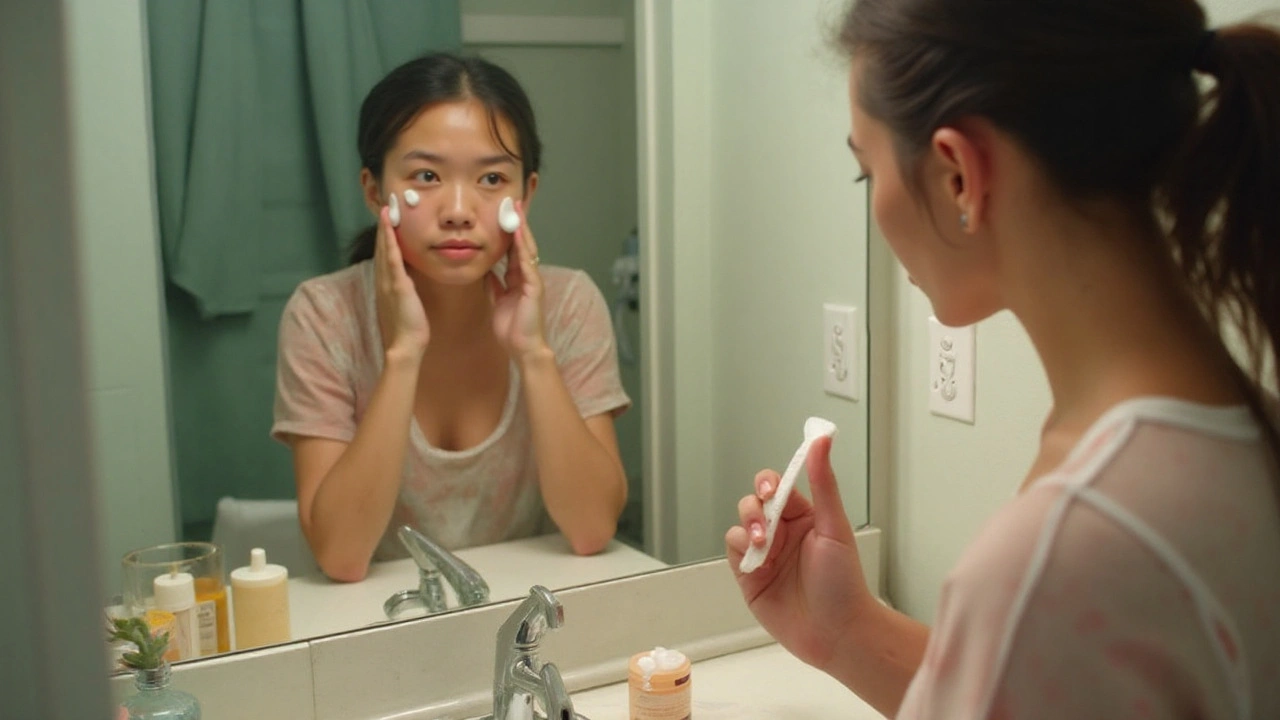
Scenarios, FAQs, and Next Steps
Real-world scenarios and how I’d approach them:
- Teen with oily T-zone and blackheads: Keep it simple-adapalene 0.1% gel nightly, benzoyl peroxide wash in the morning, ultrasonic scrubber once weekly, and a single-loop extractor for stubborn blackheads. LED optional if inflamed.
- Adult hormonal breakouts along the jaw: LED (blue + red) 4-5x/week for 12 weeks, hydrocolloid patches for deep zits you’re tempted to pick, azelaic acid 10-15% or a retinoid at night. If flares align with cycle, ask your clinician about spironolactone.
- Sensitive or rosacea-prone skin: Skip vacuums and aggressive extraction. Consider red-light only sessions, hydrocolloids, azelaic acid, and a fragrance-free moisturizer.
- Deep, painful cysts: Devices won’t fix these fast. Book a dermatologist. Steroid injections can shrink a cyst in 24-48 hours; long-term plan may include oral meds.
- Dark skin and hyperpigmentation risk: Prioritize LED, hydrocolloids, and gentle routines. Be cautious with loops and avoid vacuums to reduce PIH.
Mini‑FAQ:
- Are LED masks safe for eyes? Reputable masks include shielding, but you still shouldn’t stare at the lights. If you have a retinal condition or migraines triggered by light, talk to your eye doctor first.
- Can blue light darken skin? Household LEDs used as directed haven’t been shown to darken skin. But post-acne pigment can worsen if you irritate skin, so go slow.
- Do hydrocolloid patches work on cysts? They help with surface swelling but won’t clear a deep cyst. Use them to avoid picking while you arrange care.
- Do pore vacuums remove blackheads for good? No. They can temporarily pull sebum but don’t stop formation. Retinoids are the long-term fix.
- Is microneedling good for acne? Not on active acne. Once clear, pros may use it for scars, not breakouts.
- How long until I see results with LED? Plan for 6-12 weeks of steady use. Take weekly photos in the same lighting to track changes.
Quick decision tree (pick one starting tool):
- Mainly red, inflamed pimples → LED mask/panel.
- Mainly blackheads/whiteheads → Comedone loop + weekly ultrasonic scrubber.
- You pick a lot, get scabs → Hydrocolloid patches.
- Very sensitive, easily irritated → LED (short sessions) + plain hydrocolloid; skip extraction.
- Cystic, scarring acne → Dermatology visit; devices are secondary.
Build a weekly routine that plays nice with tools:
- Morning: Gentle cleanse → benzoyl peroxide (2.5-5%) or azelaic acid → moisturizer → sunscreen.
- Evening: Cleanse → retinoid (adapalene/tretinoin) most nights → moisturizer. Use LED before skincare if your device recommends bare skin.
- Tools: LED 3-5x/week; ultrasonic 1x/week; loop extractor max 1x/week; patches as needed.
Troubleshooting:
- More breakouts after starting LED: Could be coincidence or irritation from stacking actives. Shorten sessions, moisturize more, and avoid adding new products for two weeks.
- Red, stinging skin with extraction: You’re pressing too hard or too often. Cut frequency in half and lean on retinoids to loosen plugs over time.
- Brown marks after a device: Post-inflammatory hyperpigmentation. Pause the tool, use sunscreen daily, consider azelaic acid or a gentle vitamin C once calm.
- No change after 12 weeks of LED: Confirm consistency, session length, and distance. If you were consistent, it may not be your tool-shift budget to topicals or see a derm.
When to call a pro now, not later:
- You have cystic lesions, scarring, or acne that hurts to touch.
- Your skin is brown or black and new dark marks appear after every breakout.
- You’re on isotretinoin and unsure what’s safe.
- Breakouts aren’t budging after 12 weeks of solid routine + one device.
Final word from me: buy fewer, better things. One solid LED, a simple loop extractor, and hydrocolloid patches beat a drawer of impulse gadgets. Anchor your routine with proven topicals, track results weekly, and give each change a fair trial window. Clear skin is boring consistency-gadgets are just the assist.
Sources I trust: AAD acne management guidance (2023-2024), FDA 510(k) summaries for consumer LED devices, randomized trials on blue/red light for acne (2007-2019 range), hydrocolloid patch RCTs (2015), and clinical caution statements on procedures during isotretinoin use. Ask your clinician to tailor these to your meds, skin tone, and history.
One more thing: If you search for acne devices, focus on those with real wavelengths disclosed (blue ~415 nm, red ~630-660 nm), clear safety notes, and realistic claims. If it sounds like magic, it isn’t.

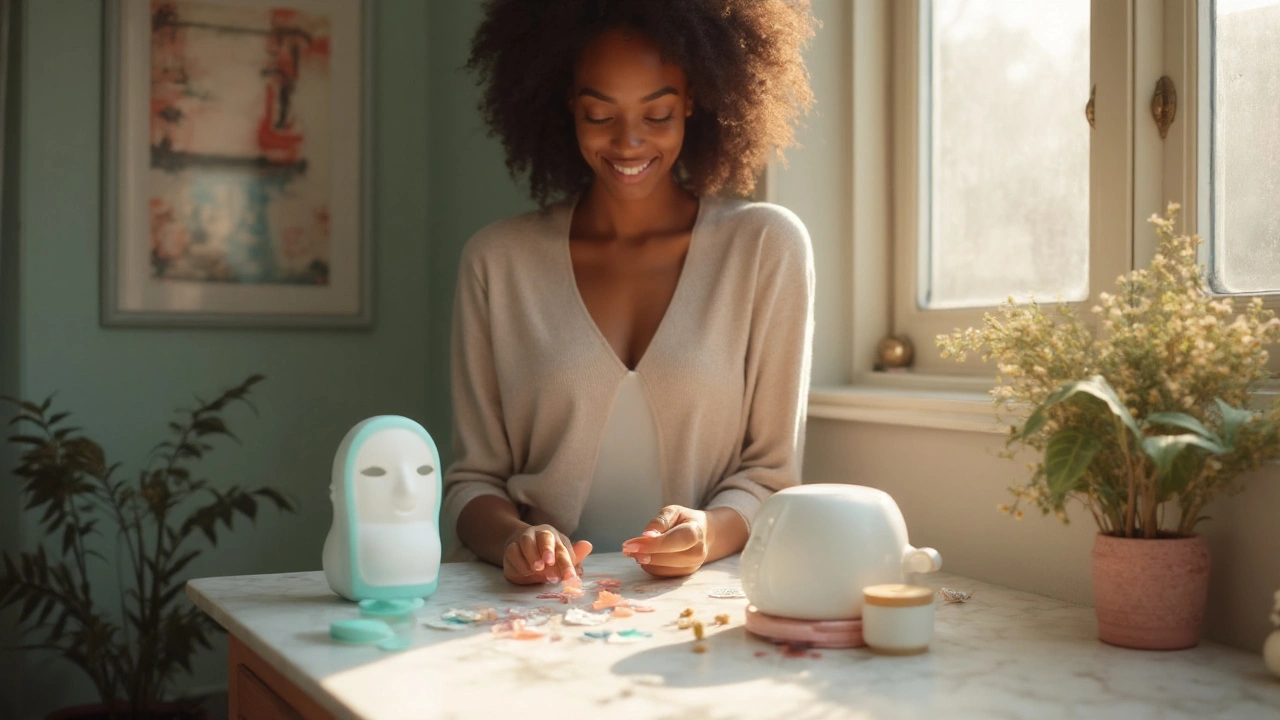
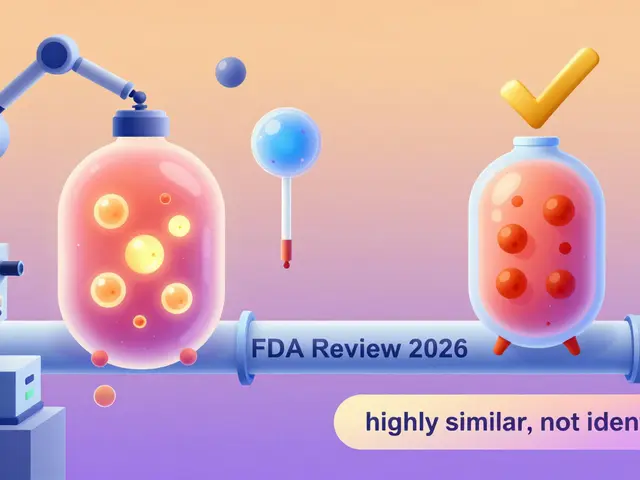
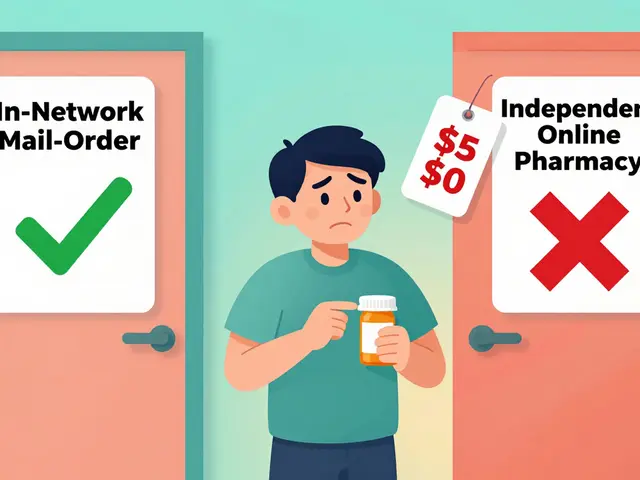
Kristin Violette on 2 September 2025, AT 07:37 AM
When you’re trying to sort through the ocean of acne gadgets, think of the device as a supplemental ally rather than a miracle worker. Look for FDA‑cleared wavelengths and documented clinical endpoints-blue light around 415 nm and red light near 630 nm have the most reproducible data. Pair that with a solid topical backbone (benzoyl peroxide or a retinoid) and you’ll avoid the classic “shiny‑new‑toy” pitfall. Also, keep the hygiene routine tight; a quick swipe with 70 % isopropyl alcohol after each session cuts down bacterial load dramatically. In short, pick one tool that matches your primary lesion type, set a realistic 8‑12‑week trial, and track progress with weekly photos.